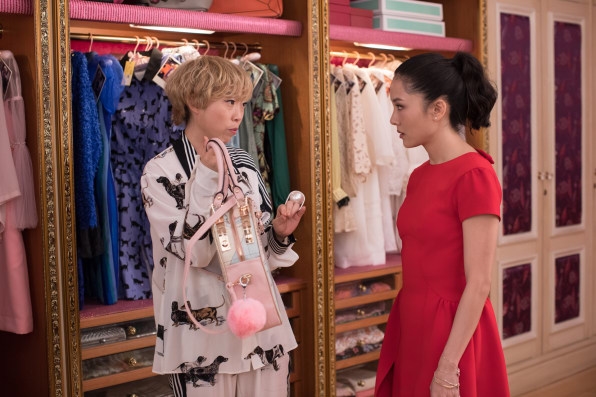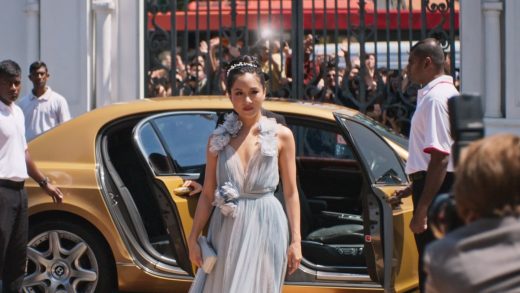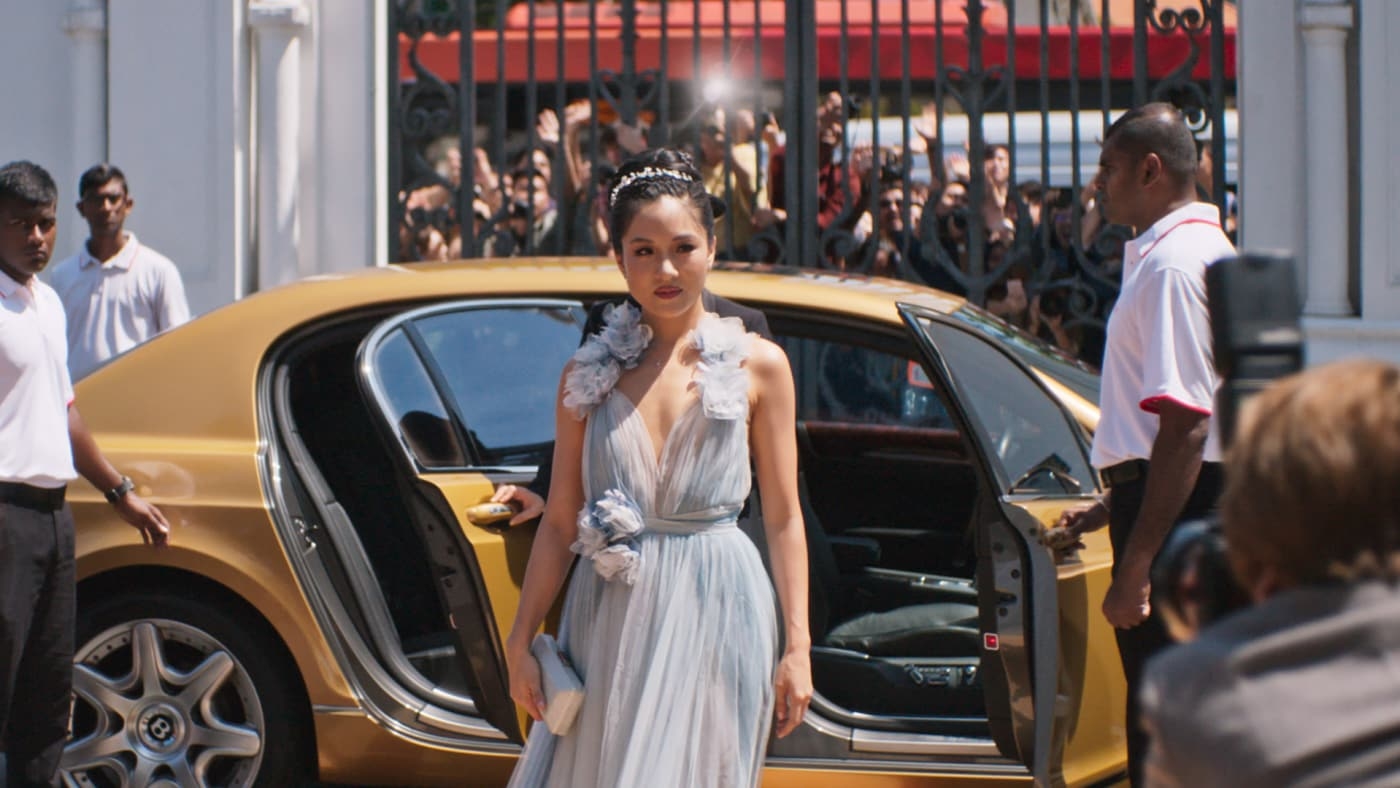Why “Crazy Rich Asians” is a wake-up call to studios
It’s hard not to roll out the puns when discussing the opening-weekend success of Crazy Rich Asians, which, if you haven’t heard—i.e., if you’ve been locked in an underground bunker for the last 72 hours—racked up $34 million in box office grosses since it opened in theaters last Wednesday. Its weekend haul, the traditional metric for judging these things, was $25 million.
In Hollywoodland, that’s big. Or “crazy rich” as most trade headlines can’t resist remarking. Or at least big for a romantic comedy that was made for $30 million, as opposed to a Marvel superhero extravaganza made for six times that. And for a film with a virtually all-Asian cast without a known, bankable star.
This last bit, of course, explains the underlying frenzy—and nonstop media—surrounding the film, which is based on Kevin Kwan’s best-selling novel about a young, beautiful Asian-American professor who accompanies her young, beautiful Asian boyfriend to his best friend’s wedding in Singapore (where said boyfriend is from), only to discover that he’s, yep, crazy rich. As has by now been dutifully pointed out many, many times, Crazy Rich Asians is the first Asian-centric film from a big studio to be released since The Joy Luck Club 25 years ago.
In the 2018 environment of #OscarsSoWhite, #TimesUp—go ahead and choose whatever meme best exemplifies Hollywood’s historic bias toward white males—Crazy Rich Asians is now more than a splashy, headline-grabbing bet. It’s another proof of concept that movies revolving around people who aren’t white males actually can work, which puts the film in the same bucket as Wonder Woman, Black Panther, and Get Out. But will it actually kickstart a trend in a way that Joy Luck Club failed to do?
Reactions from studio executives on Monday suggest that the film’s success is certainly a “wake up call to studio heads who play defense all day long,” as one executive put it. “Hopefully, it will make people a little more open to making movies that are slightly out of the box. We’ll see.”
This person pointed out that Crazy Rich Asians is all the more a phenomenon because it’s not a $5 million indie film, and Warner Bros. put all of its marketing and distribution weight behind it, releasing it in more than 3,000 theaters. This, combined with the movie’s familiar, catchy title; strong word of mouth; and the fact that it’s actually good (it has a Rotten Tomatoes score of 93%) proved to be box office gold. If you yourself didn’t actually buy a ticket to see the film on Saturday or Sunday, chances are you know someone who did.
But these factors also explain the “we’ll see” caveat when it comes to predicting whether the film will spur more in its category. “I think it’s too narrow,” said one cautious studio marketer. “It’s tough.” On Friday, as Crazy Rich Asians was kicking into spinjitzu-gear at the box office, another emailed: “Will this open the door to tons of [big-budget] Asian-starring films? I am not sold. Look at the recent Matt Damon movie (The Great Wall)—that should have been huge and wasn’t. I think we still have a long way to go with mainstream, middle-of-the-country audiences and this type of film.” Indeed, Crazy Rich Asians did perform best in coastal cities with large Asian populations, and it’s unlikely studios will start making tentpole-level movies with majority Asian casts if the films are unlikely to play in Peoria. (As for the Great Wall comparison, the truth is, that film simply wasn’t very good. It has a Rotten Tomatoes score of 35%.)

Hollywood has never been quick to switch gears and embrace the reality that exists beyond its gilded gates. (Look, Asian people live here, too!) But what Crazy Rich Asians indisputably proved–regardless of how cynical you want to be–is that there is a hunger for Asian-American stories on the big screen and that the Asian-American community is an impassioned, driven, and social-media-savvy one that will work hard to support those projects: Forty percent of the movie’s audience over opening weekend was Asian American (typically it’s between 8% and 10%). Over the past several weeks, a group of high-profile Asian-Americans from the tech, entertainment, and sports worlds banded together and started the #OpenGold hashtag campaign in support of the film. The group, which included Joy Luck Club producer Janet Yang, K pop star Eric Nam, Twitch co-founder Eric Lin, and digital entrepreneur and former YouTube executive Bing Chen, ignited support for the film on social media, hosted dinners with influencers, and rented out dozens of movie theaters for special screenings of Crazy Rich Asians before and during its opening week.
“We are a force that can help open films and reach people that normally wouldn’t be reached by traditional means,” said Yang. “It’s so gratifying to see it at work and know just how many people are so passionate and so resourceful.”
Warner Bros., which recently created a multicultural marketing division, realized this and summoned Yang and others to discuss marketing and word of mouth before the film was released, according to Yang. “Terra Potts (senior VP of the group) brought several of us in . . . to say, ‘Look guys. It’s a win-win. We can all benefit from this,’” she said.
Yang said this type of collaboration never happened with Joy Luck Club because at the time “Asians didn’t even exist as a demographic. No one thought we were a thing. We didn’t have the data back then.”
Nor did social media exist as a way to connect and galvanize support around a cause or project. Or Netflix, a deep-pocketed newcomer that is beefing up on its Asian content as it tries to penetrate that market. Tellingly, Netflix bid on Crazy Rich Asians, but was turned down because the filmmakers wanted a theatrical release.
Something else that Joy Luck Club lacked was other projects lined up to take advantage of the interest it generated for Asian stories. “There weren’t any other, big mainstream movies that came after to continue that momentum,” said Masashi Niwano, festival and exhibitions director of the Center for Asian American Media. “I think a big part of [whether Crazy Rich Asians ignites real change in Hollywood] is what comes next.”
To that effect, many in the Asian-American community are hoping that the upcoming Searching, a film about a dad (played by John Cho) whose teenage daughter goes missing, gets a boost from Crazy Rich Asians. And as Fast Company reported last week, more than a dozen Asian-centric TV and films have been announced or are set for release, including a TV series based on another best-selling novel, Pachinko, at Apple; and a self-titled Comedy Central show starring the comedian and Crazy Rich Asians star Awkwafina (aka Nora Lum). They join a movement that has already begun with TV shows like Fresh Off the Boat and Sandra Oh’s recent Emmy nomination for Killing Eve—the first time a woman of Asian descent was acknowledged in the lead actress category.
Whether this is more than a trend remains to be seen and will depend in no small part on how Crazy Rich Asians continues to perform at the box office. But at the very least, the film has proved that Asian Americans “are a gigantic, untapped market,” according to the studio executive. “It’s a business. And it’s a missed opportunity for those studios that don’t realize that.”
(25)



